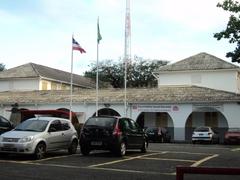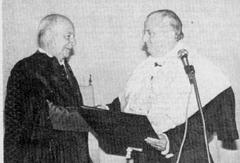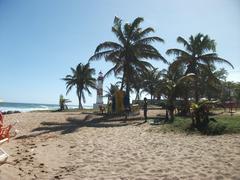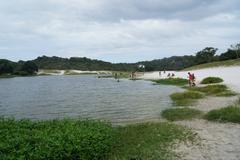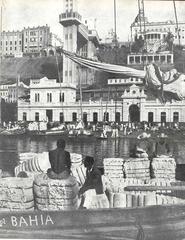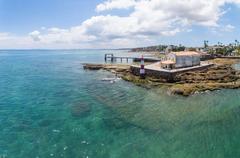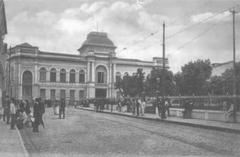
Ilê Axé Iyá Nassô Oká Visiting Hours, Tickets, and Salvador Historical Sites Guide
Date: 04/07/2025
Introduction
Ilê Axé Iyá Nassô Oká, also known as Casa Branca do Engenho Velho, is revered as the oldest Candomblé terreiro in Brazil. Founded in the early 19th century by African women of Yoruba descent, led by the influential Iyá Nassô (Francisca da Silva), this sacred site stands at the heart of Salvador’s Engenho Velho da Federação neighborhood. Ilê Axé Iyá Nassô Oká is not just a religious sanctuary but a living monument to the resilience and rich spiritual traditions of Afro-Brazilian communities. Its recognition as the first Afro-Brazilian religious site to receive national heritage status from IPHAN in 1986 underscores its immense cultural importance (Fatosepoints; Wikipedia; Redalyc; Salvador da Bahia; IPHAN; Atlas do Chão).
This guide offers a detailed exploration of Ilê Axé Iyá Nassô Oká’s history, architecture, cultural significance, and practical visitor information, including visiting hours, ticketing, accessibility, and festival highlights. Whether you are drawn by spirituality, curiosity, or a love of history, this resource will help you plan a respectful and meaningful visit to one of Salvador’s most iconic historical sites.
Table of Contents
- Introduction
- Historical Origins and Founding
- Leadership and Community
- Architecture and Sacred Landscape
- Religious and Cultural Significance
- Heritage Status and Preservation
- Visitor Information
- Festivals and Ritual Calendar
- Visitor Guidelines
- Nearby Attractions
- Frequently Asked Questions (FAQ)
- Visuals and Media
- Conclusion and Visitor Recommendations
- References and Useful Links
Historical Origins and Founding
Ilê Axé Iyá Nassô Oká traces its roots to the early 1800s, during the era of the transatlantic slave trade. It was established by freed African women of Yoruba origin—including Iyá Nassô, Iyá Detá, and Iyá Kalá—who sought to preserve their spiritual and cultural traditions in Bahia. The temple’s first location was near Barroquinha, later moving to Engenho Velho da Federação, and it quickly became a refuge for African religious practice in a hostile colonial environment (Fatosepoints; Redalyc; Kora Matrix MSU).
Leadership and Community
Since its inception, Ilê Axé Iyá Nassô Oká has exemplified matriarchal leadership, with women (iyalorixás) at the helm, guiding religious life and community activities. Despite periods of severe repression—especially after the 1835 Malê Rebellion—the terreiro remained a center for spiritual resilience and transmission of African heritage (Kora Matrix MSU).
Architecture and Sacred Landscape
The terreiro covers approximately 6,800 square meters, blending ceremonial buildings, sacred trees, and ritual spaces dedicated to various orixás. Key features include the Temple of Oxé, shrines to Oxum and Oxalá, and ancient gameleira trees considered to house the spiritual force (axé) of the orixás (Redalyc; Vibrant Virtual Brazilian Anthropology). The spatial arrangement and symbolic architecture reflect the cosmology and ritual needs of Candomblé practice.
Religious and Cultural Significance
As the cradle of Candomblé in Bahia, Ilê Axé Iyá Nassô Oká is primarily dedicated to Oxóssi (orixá of the hunt and abundance), but honors a pantheon of deities. Its annual festivals, communal rituals, music, dance, and culinary traditions are vibrant expressions of Afro-Brazilian heritage (OkayAfrica; Fatosepoints; Ancestrals). The terreiro is also a focal point for education and advocacy, promoting Yoruba language instruction and community support initiatives (Geledés).
Heritage Status and Preservation
Ilê Axé Iyá Nassô Oká was recognized by IPHAN in 1986 as the first Afro-Brazilian religious site inscribed as a national heritage landmark. This followed a successful campaign led by community members and prominent allies to protect the temple from urban development threats. The designation safeguards not only the physical site, but also its intangible cultural legacy, setting a precedent for the preservation of other terreiros across Brazil (Redalyc; Salvador da Bahia).
Visitor Information
Location and Directions
- Address: Engenho Velho da Federação, Salvador, Bahia, Brazil
- Access: Easily reachable by taxi or public transport from central Salvador, including the historic Pelourinho district (Salvador da Bahia).
- Instagram: @terreirocasabranca
- Phone: +55 (71) 3334-5694
Visiting Hours
- General Hours: Tuesday to Sunday, 9:00 AM–5:00 PM
- By Appointment: Recommended for guided tours and in-depth visits
- Festival Days: Hours may vary; check ahead for special events
Tickets and Tours
- Entry: Free; donations are encouraged to support the terreiro’s activities and maintenance
- Guided Tours: Available by appointment and during festivals; booking through local operators or cultural centers is recommended
- Tour Content: Insights into Candomblé history, architecture, rituals, and community life (Visit Brasil)
Accessibility
- The site’s historic layout includes uneven terrain and traditional structures; visitors with mobility challenges should contact the terreiro in advance to discuss accommodations.
Photography Guidelines
- General Policy: Photography is permitted in public areas but restricted during rituals or inside sacred spaces.
- Permission: Always seek approval before taking photos, especially of ceremonies or devotees.
Festivals and Ritual Calendar
Key public festivals at Ilê Axé Iyá Nassô Oká include:
- Festa de Oxóssi: Held on Corpus Christi, honoring the temple’s patron orixá.
- Festa de Xangô: Celebrated on June 29, coinciding with Saint Peter’s Day.
- Águas de Oxalá: A purification ritual in late August.
These events feature processions, music, drumming, dance, and communal feasting—offering visitors a vivid immersion in Afro-Brazilian religious culture.
Visitor Guidelines
- Attire: White clothing is preferred; men should wear trousers and women long skirts.
- Conduct: Show respect for rituals and sacred spaces; silence is expected during ceremonies.
- Participation: Observers are welcome during public festivals, but active participation is generally reserved for practitioners.
- Support: Donations and purchases of crafts or books help sustain the community.
Nearby Attractions
While visiting Ilê Axé Iyá Nassô Oká, consider exploring:
- Pelourinho: Historic district with colonial architecture and vibrant cultural life
- Church of Bonfim: Iconic site blending Catholic and Afro-Brazilian traditions
- Museu Afro-Brasileiro: Museum dedicated to African heritage in Brazil
- Other Terreiros: Such as Ilê Axé Opô Afonjá and Terreiro do Gantois
Frequently Asked Questions (FAQ)
Q: Do I need to book tickets in advance?
A: No formal tickets are required, but advance booking is recommended for guided tours.
Q: Is photography allowed?
A: Yes, with permission and outside ritual times.
Q: Are there dress code requirements?
A: Modest, respectful attire (preferably white) is expected.
Q: Can visitors participate in rituals?
A: Participation is generally limited; observers are welcome during public festivals.
Q: Is the site accessible for people with disabilities?
A: Accessibility is limited; contact the terreiro in advance to discuss options.
Visuals and Media
For images and virtual tours, explore resources on Atlas do Chão and other official heritage sites.

Conclusion and Visitor Recommendations
Ilê Axé Iyá Nassô Oká is a living testament to the resilience, spirituality, and cultural richness of Salvador’s Afro-Brazilian communities. Its matriarchal leadership, sacred architecture, and dynamic festivals offer a profound window into Candomblé and Brazilian history. Respectful visitors will find not only a religious monument but a thriving center for education, activism, and cultural exchange.
For the most rewarding experience:
- Plan your visit ahead and check for festival dates.
- Embrace the opportunity to learn about Candomblé and its role in Salvador’s identity.
- Use resources such as guided tours and the Audiala app for deeper insights.
References and Useful Links for Further Information
- Saiba Mais: O Terreiro do Gantois, 2015, Fatosepoints (Fatosepoints)
- Ilê Axé Iyá Nassô Oká - Wikipedia (Wikipedia)
- Analysis of Benin Jeje Nago and Yoruba Orisa Religion in Brazil, 2023, Ancestrals (Ancestrals)
- National Heritage Listing of Ilê Axé Iyá Nassô Oká, 1986, Redalyc (Redalyc)
- Ilê Axé Iyá Nassô Oká and Afro-Brazilian Culture, Salvador da Bahia (Salvador da Bahia)
- Casa Branca do Engenho Velho Historical and Visitor Guide, Kora Matrix MSU (Kora Matrix MSU)
- Exploring Ilê Axé Iyá Nassô Oká: Visitor Tips, Visit Brasil (Visit Brasil)
- Ilê Axé Iyá Nassô Oká Heritage Entry, IPHAN (IPHAN)
- Ilê Axé Iyá Nassô Oká Overview, Atlas do Chão (Atlas do Chão)









